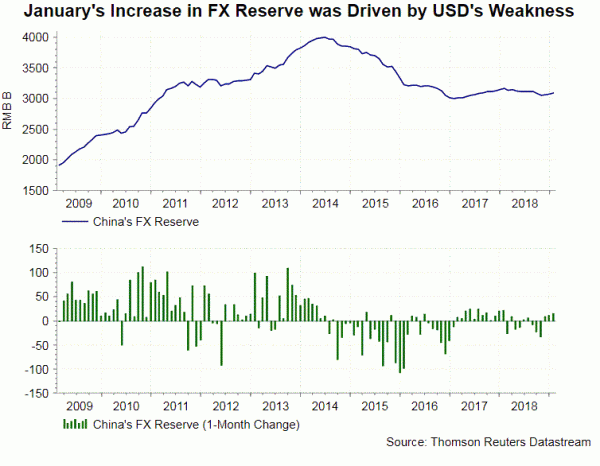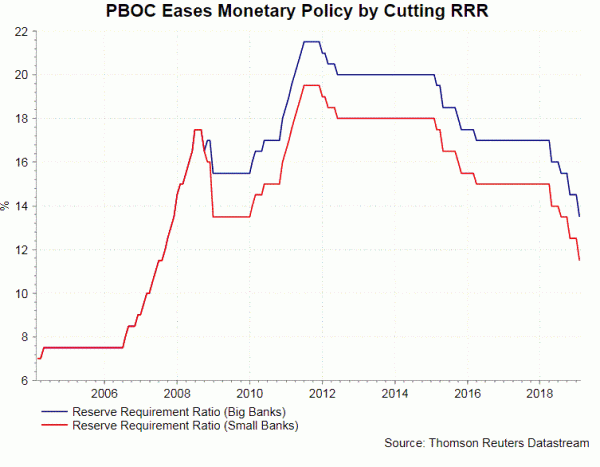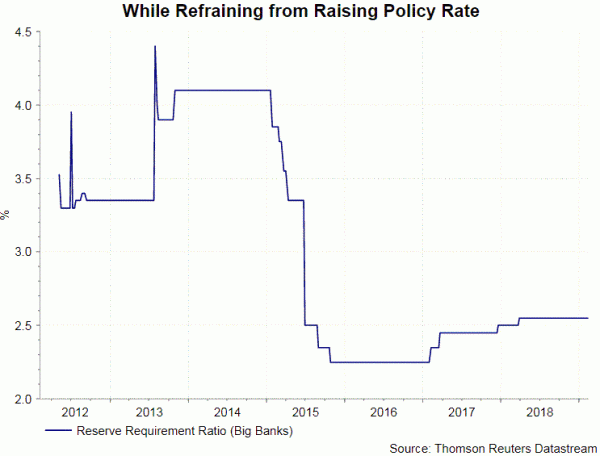Headline CPI eased to +1.7% y/y in January, missing consensus of and December’s +1.9%. The slowdown was mainly driven by food price which fell -0.6 percentage point to +1.9%. Non-food inflation steadied at +1.7%. PPI decelerated sharply to +0.1% y/y, from +0.9% a month ago. The market had already anticipated a significant slowdown of +0.2% but the actual figure was even worse. Weakness in PPI reveals that the growth industrial profit is negatively affected.
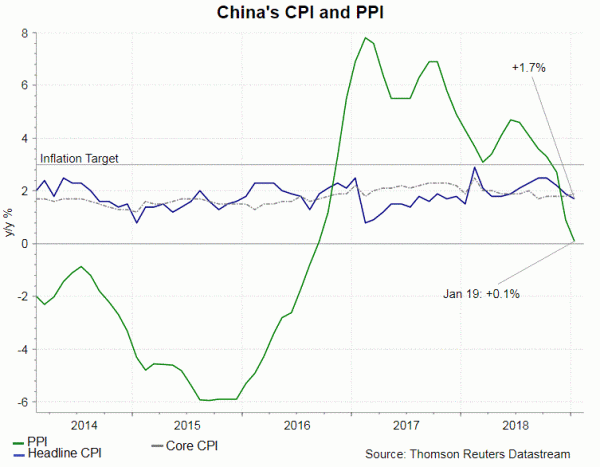
FX reserve increased to US$ 3.088 trillion in January, from US$ 3.073 trillion a month ago. It also came in higher than consensus of US$ 3.082 trillion. We believe most of the increase was driven by valuation effect as the US dollar index slipped about -0.6% last month. While FX reserve has been a tool for PBOC to intervene renminbi’s movement, we do not see much manipulation this time, given that renminbi strengthened more than +2% during the period. USDCNY has been moving in a downtrend after peaking in October 2018. We believe the Chinese government intentionally allows its currency to appreciate as it prepares the negotiate with the US on trade issues.
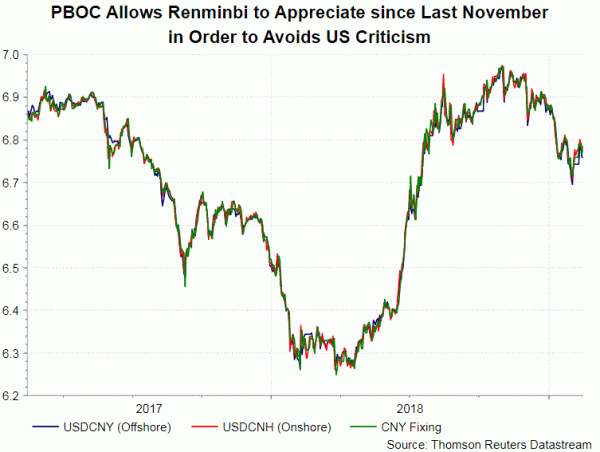 The seemingly improvement in January’s trade data was mainly driven by seasonal factor. Import growth contracted -1.5% y/y, easing from the -7.6% decline a month ago. Export growth soared +9.1% y/y, more than reversing the -4.4% contraction last December. Trade surplus narrowed to US$ 39B in January from the prior month’s US$57 in December. Yet, this more than doubled the 18.42B surplus in the same period last year. Trade with the US, its biggest trading partner, continued to suffer. Imports from the US contracted -41.09% y/y, accelerated from -35.78% in December. While recovery exports to the US remained in decline, falling -2.77% during the month. Notwithstanding the significant improvement in both headline imports and exports, much was driven by the front-loaded purchases ahead of the Lunar New Year holiday in early February. We expect to see weakness in the February data which would conform to the view that China’s economic growth continues to slow.
The seemingly improvement in January’s trade data was mainly driven by seasonal factor. Import growth contracted -1.5% y/y, easing from the -7.6% decline a month ago. Export growth soared +9.1% y/y, more than reversing the -4.4% contraction last December. Trade surplus narrowed to US$ 39B in January from the prior month’s US$57 in December. Yet, this more than doubled the 18.42B surplus in the same period last year. Trade with the US, its biggest trading partner, continued to suffer. Imports from the US contracted -41.09% y/y, accelerated from -35.78% in December. While recovery exports to the US remained in decline, falling -2.77% during the month. Notwithstanding the significant improvement in both headline imports and exports, much was driven by the front-loaded purchases ahead of the Lunar New Year holiday in early February. We expect to see weakness in the February data which would conform to the view that China’s economic growth continues to slow.
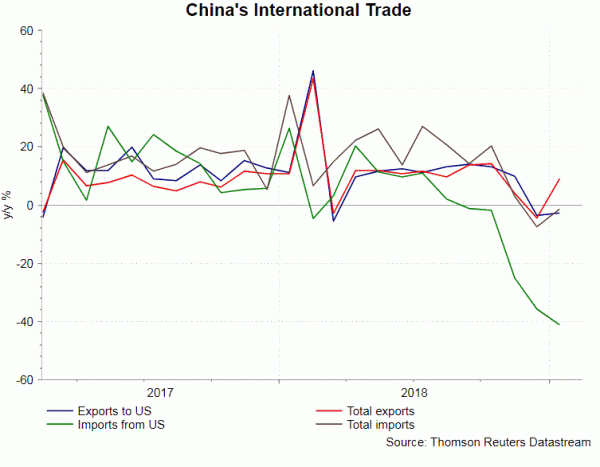 Before Lunar New Year holiday, the government announced that the manufacturing PMI edged +0.1 point higher to 49.5 in January. While the reading beat consensus slightly, a reading below 50 signaled that the sector remained in contraction. The report by Markit/Caixin confirmed the gloomy outlook with the final manufacturing PMI slipped -1.4 points to 48.3 last month. Meanwhile, but indices suggested that the services sector stayed in expansionary territory.
Before Lunar New Year holiday, the government announced that the manufacturing PMI edged +0.1 point higher to 49.5 in January. While the reading beat consensus slightly, a reading below 50 signaled that the sector remained in contraction. The report by Markit/Caixin confirmed the gloomy outlook with the final manufacturing PMI slipped -1.4 points to 48.3 last month. Meanwhile, but indices suggested that the services sector stayed in expansionary territory.
As we await more data flow (industrial production, retail sales, fixed asset investment) in coming weeks, continuing softer growth is evident. As such, the Chinese government would continue to adopt more accommodative (the government insists that it is prudent and neutral) policy, both monetarily and fiscally.




